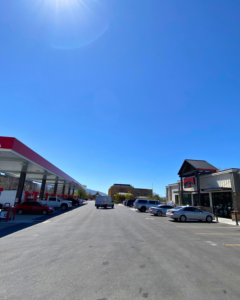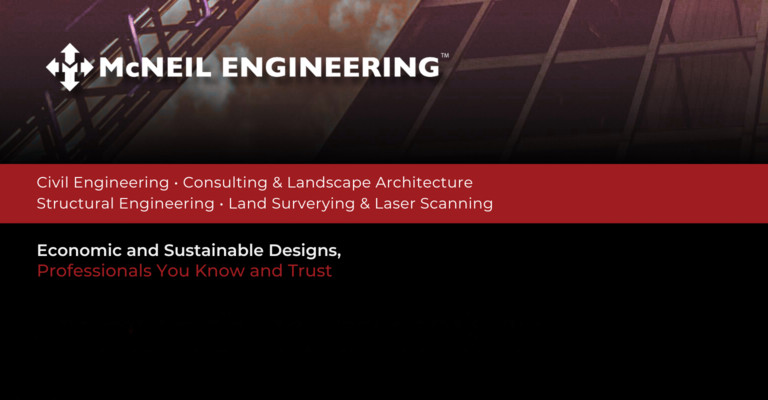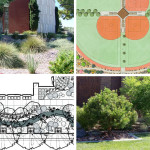 Gas stations are an ordinary part of our lives. Every day, we pass multiple stations as we travel and don’t think about it. However, ordinary gas stations have some unique design and paving considerations. Our civil engineering and paving team recently completed a paving design for the Maverik location in Sandy, Utah, and we learned for ourselves the unique considerations this type of project entails.
Gas stations are an ordinary part of our lives. Every day, we pass multiple stations as we travel and don’t think about it. However, ordinary gas stations have some unique design and paving considerations. Our civil engineering and paving team recently completed a paving design for the Maverik location in Sandy, Utah, and we learned for ourselves the unique considerations this type of project entails.
The impact of smart fueling station design
Imagine pulling up to a gas station littered with potholes, which is challenging to navigate, and when it rains or snows, water builds up, leaving large puddles full of runoff, spilled fuel and more debris. That’s the reality of a poor fueling station design, and we were striving to avoid it when we took on this project with Maverik. As a high-traffic fueling and convenience location, the project required:
- A practical layout for optimal traffic flow
- Durable paving materials to withstand constant use
- Stormwater management to prevent runoff and environmental hazards
Optimizing traffic flow
Fueling stations, like the Maverik location, must accommodate a steady stream of vehicles. Vehicles of all different sizes and weights pull in to fuel up at the pump or to park and shop in the convenience store. Additionally, the station needed enough room for large fuel delivery trucks to make regular deliveries. For the Maverik location, we designed a layout that prioritized:
- Easy access to fueling pumps: Our design needed to leave enough room for customers to pull in to use the fuel pumps from multiple angles, with enough room for different-sized vehicles.
- Ample space for fuel delivery trucks: Large fuel tankers make regular deliveries to fill the underground tanks. These trucks need space to maneuver during business hours to safely refill underground tanks without disrupting daily operations.
- Clear and safe exit routes: Our design accounted for traffic merging from fueling stations, parking areas, and main road exits to minimize bottlenecks and ensure safety.
Choosing the right paving materials
A key component for this type of project is choosing the right paving materials. Fueling stations need a durable one that will last for years, even with the constant strain of traffic coming in and out. The most popular choices are asphalt and concrete. Here are some pros and cons of these materials for fueling stations.
- Asphalt: It costs less to install initially and less and has a quick installation process. It can withstand heavy loads and resist cracking, working well in high-traffic areas. It also provides excellent traction, even in wet conditions. However, asphalt is more susceptible to damage from fuel spills and extreme heat. Regular maintenance, including seal coating, is essential to protect its surface and extend its lifespan, typically 20-30 years with proper care.
- Concrete: It lasts even longer than asphalt, with 30-40 years or more lifespan. Its rigid structure provides superior resistance to fuel spills, and it can withstand heavier loads than asphalt. Concrete also reflects more sunlight, which can help keep the fueling station cooler in warm climates. However, concrete installation takes longer, and it’s much more expensive to install and repair.
Implementing an effective drainage system
Effective stormwater drainage is critical for any fueling station. Water accumulation can lead to many problems, from safety hazards like slips and falls to pavement damage caused by freeze-thaw cycles and erosion. Proper grading is the first line of defense to direct water away from the fueling area and towards designated drainage systems. Placing catch basins strategically around the site to collect runoff and channel it into underground pipes or other drainage infrastructure also help since fueling stations have environmental regulations regarding stormwater management and runoff that have to be met. We also had to account for how fuel spills can degrade pavement over time. Gasoline, oil, and other automotive fluids can penetrate the pavement surface, causing it to crack, crumble, and deteriorate. We incorporated coatings to protect the paving surface from fuel spills and spill containment systems.
Paving the way for success
Our work on the Maverik project utilized our team’s extensive engineering skills and paving knowledge. Preparing a design that meets the station’s needs for traffic flow, drainage and stormwater management was not always easy, but with our team’s extensive experience, we came up with a design that checked all the boxes. Our team is very proud of our work on this project, and we look forward to taking on more projects like it in the future!








